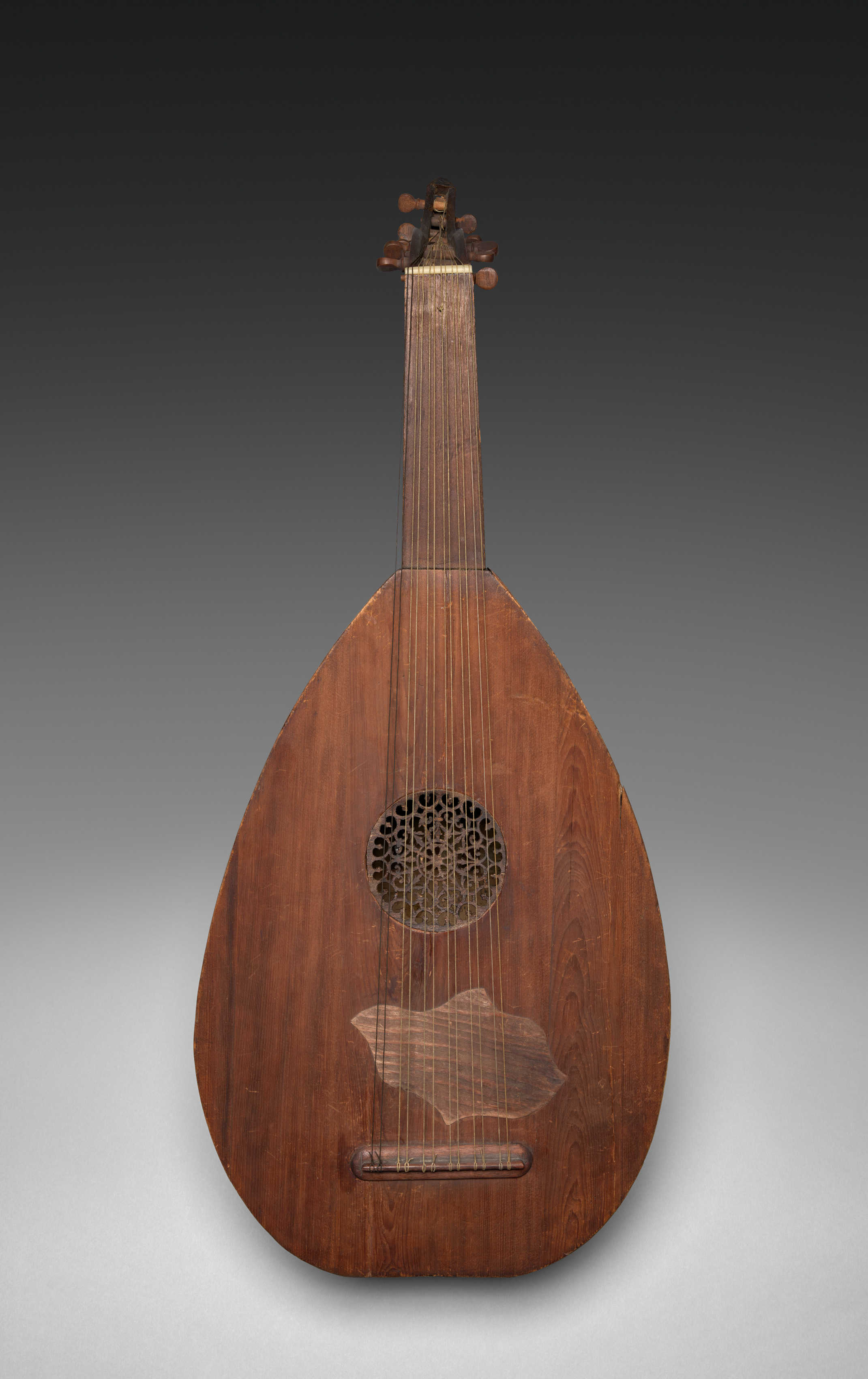The Cleveland Museum of Art
Collection Online as of April 25, 2024

Oud
late 1800s–early 1900s
Overall: 81.3 x 33.7 cm (32 x 13 1/4 in.)
Location: not on view
Did You Know?
The oud has influenced music traditions throughout the world by becoming the European lute, the Chinese pipa, and the Indonesian qanbūs.Description
A member of the lute family, there is perhaps no more emblematic instrument of the Islamic world than the oud. It provided music for banquets and gatherings, accompanied poets, punctuated celebrations and festivals, and is still prominent today. The oud is included in the medieval philosopher al-Farabi’s (872–950/951) Great Book of Music (Kitab al-Musiqa al-Kabir) in which he discusses the modal system of Arabic music. The defining characteristics of an oud are evident here: a pear-shaped body with a fretless fingerboard and a peg box set at a 45-to-90-degree angle to the neck.- ?–1918Ralph King [1855–1926], Cleveland, OH, given to the Cleveland Museum of Art1918–The Cleveland Museum of Art, Cleveland, OH
- "Accessions." The Bulletin of the Cleveland Museum of Art 5, no. 8/9 (1918): 82-85. Mentioned: p. 82 www.jstor.orgD. S. M. "Exhibition of Musical Instruments." The Bulletin of the Cleveland Museum of Art 8, no. 9 (1921): 134-43. Mentioned: pp. 134-137 www.jstor.org
- {{cite web|title=Oud|url=false|author=|year=late 1800s–early 1900s|access-date=25 April 2024|publisher=Cleveland Museum of Art}}
Source URL:
https://www.clevelandart.org/art/1918.350